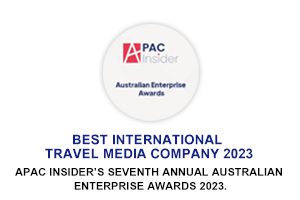 From January 1, 2025, Lufthansa Cargo will include the rising costs of sustainable aviation fuel (SAF) due to regulatory environmental requirements in the price index of its existing Airfreight Surcharge (ASC). For departures from European Union (EU) countries, a mandatory SAF blending rate of initially two percent will apply from 2025. Countries outside the EU are also planning to introduce or have already introduced mandatory SAF blends. The Indian government, for example, is working on a mandatory quota of one to five percent from 2027. Singapore is requiring airlines to add one percent SAF to flights departing from Changi Airport starting in 2026. The target is three to five percent by 2030. By then, the EU will require six percent, and the UK and Japan will require ten percent.
From January 1, 2025, Lufthansa Cargo will include the rising costs of sustainable aviation fuel (SAF) due to regulatory environmental requirements in the price index of its existing Airfreight Surcharge (ASC). For departures from European Union (EU) countries, a mandatory SAF blending rate of initially two percent will apply from 2025. Countries outside the EU are also planning to introduce or have already introduced mandatory SAF blends. The Indian government, for example, is working on a mandatory quota of one to five percent from 2027. Singapore is requiring airlines to add one percent SAF to flights departing from Changi Airport starting in 2026. The target is three to five percent by 2030. By then, the EU will require six percent, and the UK and Japan will require ten percent.
SAF is a crucial technological key to more sustainable flying and is essential for the energy transition in aviation. However, the aviation industry cannot initiate a competitive SAF market on its own. A targeted policy support strategy is required. Significantly more use of SAF is only possible if its supply volumes and availability increase substantially as quickly as possible and the prices fall accordingly. Biogenic SAF is currently available in small quantities and 3-5 times more expensive than fossil fuel. A targeted policy strategy is needed to be able to meet the volumes for the blending rates and beyond.
How does the Airfreight Surcharge work?
The ASC has been in effect since 2015. It is a combined surcharge to cover additional costs that cannot be influenced by Lufthansa Cargo. So far, these have mainly been rising fuel, currency and security prices. The flexible and fair system works as follows: Lufthansa Cargo monitors the development of additional costs using a standardized index calculation system. If the indexed costs require an upward or downward adjustment to the ASC, the cargo carrier will review and determine the appropriate adjustment. The ASC is added to the net price of each shipment. In some countries, regulations do not allow surcharges or only allow them to be applied in other ways. This may result in different surcharge levels from country to country.
Systematic climate targets
As one of the world’s leading cargo airlines, Lufthansa Cargo’s mission is to enable global business and connect countries and markets in the most sustainable way possible. Together with the Lufthansa Group, the company has set itself ambitious climate protection targets and aims to achieve a neutral CO₂ balance by 2050. By 2030, Lufthansa Cargo aims to halve its net CO₂ emissions compared to 2019 through reduction and compensation measures, and is relying in particular on a state-of-the-art fleet, the use of sustainable aviation fuels, the continuous optimization of flight operations and optional offers to make the transportation of cargo more sustainable.
The add-on service “Sustainable Choice” continues to enable customers to have their shipments transported more sustainably by Lufthansa Cargo through the use of SAF and contributions to a high-quality climate protection project portfolio. The SAF portion of the add-on service can be accounted for by emission reduction certificates.
Background SAF
Individual flights are not fueled with pure SAF. As a so-called “drop-in” fuel, SAF is compatible with fossil kerosene and can be easily added to it. Before being transported to the airport, SAF is blended with fossil aviation fuel and then fed into the airport infrastructure. The Lufthansa Group ensures that the amount of SAF required to offset individual CO₂ emissions is fed into the Lufthansa Group’s flight operations within six months of purchase. Over its entire life cycle, SAF made from biogenic residues has a carbon footprint that is approximately 80 percent lower than that of conventional kerosene made from fossil crude oil.















